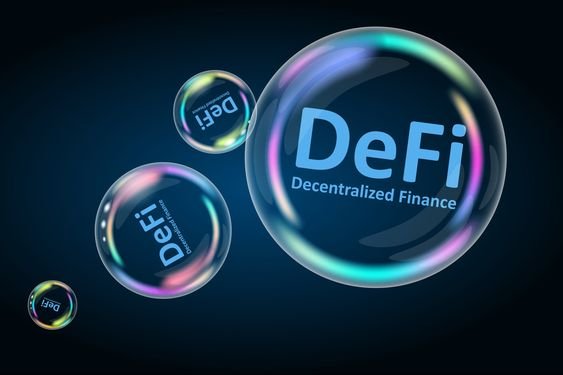Decentralized Finance, commonly known as DeFi, has emerged as one of the most disruptive forces in the financial industry. Built on blockchain technology, DeFi aims to recreate and improve traditional financial services by removing intermediaries, increasing transparency, and offering users more control over their assets. As DeFi continues to gain momentum, its impact on traditional banking is becoming increasingly evident. This article explores how DeFi is challenging the conventional banking system, the potential implications, and what the future might hold for both industries.
Understanding Decentralized Finance (DeFi)
Decentralized Finance refers to a system of financial products and services that are accessible to anyone with an internet connection and built on blockchain networks. Unlike traditional finance, which relies on centralized institutions like banks and brokerages, DeFi operates through decentralized applications (dApps) and smart contracts that automate and facilitate transactions without the need for intermediaries.
DeFi platforms offer a wide range of services, including lending, borrowing, trading, and investing, all conducted in a peer-to-peer manner. Popular DeFi platforms include Uniswap, Aave, and Compound, each providing users with innovative ways to manage and grow their digital assets.
Key Differences Between DeFi and Traditional Banking
1. Decentralization vs. Centralization
One of the most significant differences between DeFi and traditional banking is the level of decentralization. Traditional banks operate under a centralized model, where a single entity controls the flow of funds and decision-making processes. In contrast, DeFi platforms are decentralized, meaning no single entity has control over the network. Instead, decisions are made through consensus mechanisms, and users have direct control over their assets.
2. Accessibility and Inclusion
DeFi platforms are designed to be accessible to anyone with an internet connection, regardless of geographic location or financial status. This inclusivity is a stark contrast to traditional banking, where access to financial services can be limited by factors such as location, income, and credit history. DeFi aims to democratize finance by providing equal opportunities for all users.
3. Transparency and Trust
Transparency is a core principle of DeFi. All transactions and smart contract operations are recorded on a public blockchain, allowing anyone to verify and audit the system. Traditional banking, on the other hand, operates with less transparency, where customers must trust the institution to act in their best interest. DeFi removes the need for trust in a central authority by providing an open and transparent platform for financial transactions.
4. Costs and Efficiency
Traditional banking services often come with high fees and lengthy processing times due to the involvement of multiple intermediaries. DeFi, by eliminating intermediaries, significantly reduces costs and increases the speed of transactions. For example, international money transfers can be executed in minutes through DeFi platforms, often at a fraction of the cost charged by traditional banks.
The Impact of DeFi on Traditional Banking
1. Disintermediation
One of the most profound impacts of DeFi on traditional banking is the concept of disintermediation, where intermediaries such as banks and financial institutions are no longer required to facilitate transactions. DeFi allows users to directly interact with each other through smart contracts, bypassing the need for banks to act as middlemen. This shift challenges the very foundation of traditional banking, as it threatens to erode the role of banks in the financial ecosystem.
2. Competition and Innovation
The rise of DeFi has introduced new competition to the traditional banking sector, pushing banks to innovate and adopt new technologies. Many traditional financial institutions are now exploring blockchain technology and developing their own decentralized solutions to remain competitive. This competition has the potential to drive significant advancements in financial services, ultimately benefiting consumers with more choices and better products.
3. Financial Inclusion
DeFi has the potential to enhance financial inclusion by providing access to financial services for individuals who are underserved or excluded by traditional banks. In developing countries, where access to banking infrastructure is limited, DeFi offers an alternative way for people to save, invest, and borrow money. This increased access can empower individuals and communities, fostering economic growth and reducing poverty.
4. Regulatory Challenges
The decentralized nature of DeFi presents significant challenges for regulators. Traditional banking is heavily regulated to ensure the stability of the financial system and protect consumers. However, DeFi operates outside of traditional regulatory frameworks, raising concerns about fraud, money laundering, and consumer protection. As DeFi continues to grow, regulators are grappling with how to effectively oversee this new financial ecosystem without stifling innovation.
5. Risks and Stability
While DeFi offers many benefits, it also introduces new risks. The reliance on smart contracts, while reducing human error, can lead to vulnerabilities in the code that can be exploited by hackers. Additionally, the rapid growth of DeFi has led to concerns about market stability, as the lack of oversight and the speculative nature of some DeFi projects could result in significant financial losses for users. Traditional banks, with their established risk management practices and regulatory oversight, are seen as more stable, but DeFi is pushing the boundaries of what is possible in the financial sector.
The Future of DeFi and Traditional Banking
The relationship between DeFi and traditional banking is likely to evolve over time. While DeFi currently operates as a parallel system to traditional finance, the two could become increasingly intertwined as banks adopt blockchain technology and explore decentralized solutions. Some potential future scenarios include:
1. Integration of DeFi in Traditional Finance
As traditional banks recognize the benefits of decentralization, they may begin to integrate DeFi solutions into their services. This could lead to a hybrid financial system where traditional institutions leverage blockchain technology to offer more efficient, transparent, and accessible products.
2. Regulatory Convergence
As DeFi continues to grow, it is likely that regulators will develop new frameworks to oversee the industry. This could result in a convergence of traditional and decentralized finance, where DeFi platforms operate under similar regulatory standards as traditional banks, ensuring consumer protection while fostering innovation.
3. Continued Innovation
The competition between DeFi and traditional banking will likely drive continued innovation in the financial sector. Consumers can expect to see new products and services that combine the best aspects of both systems, offering greater flexibility, lower costs, and improved accessibility.
Conclusion
Decentralized Finance is reshaping the financial landscape by challenging the traditional banking system. Through disintermediation, increased competition, and enhanced financial inclusion, DeFi is forcing traditional banks to rethink their business models and adopt new technologies. While DeFi offers many benefits, it also presents risks and regulatory challenges that need to be addressed. As the financial industry continues to evolve, the interplay between DeFi and traditional banking will be a critical factor in determining the future of finance.
ALSO READ: Understanding the Dynamics of Small-Cap Companies in India




